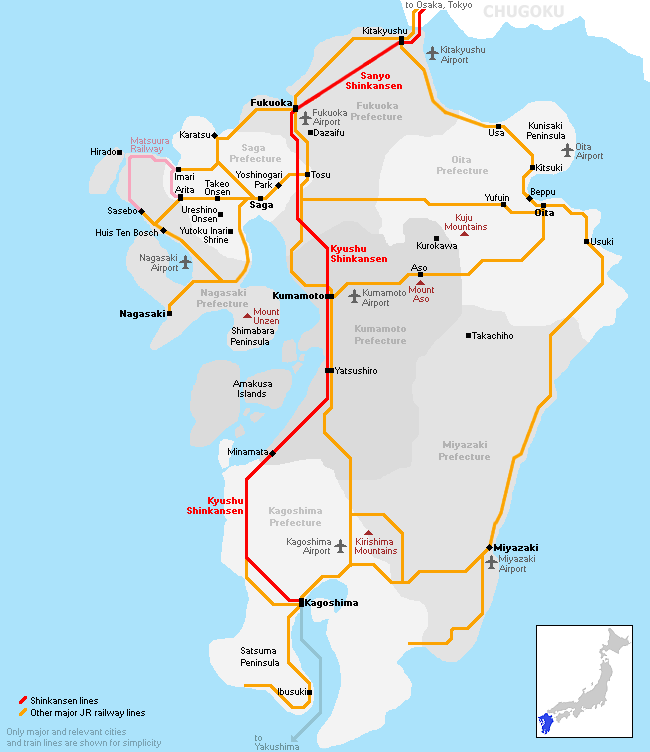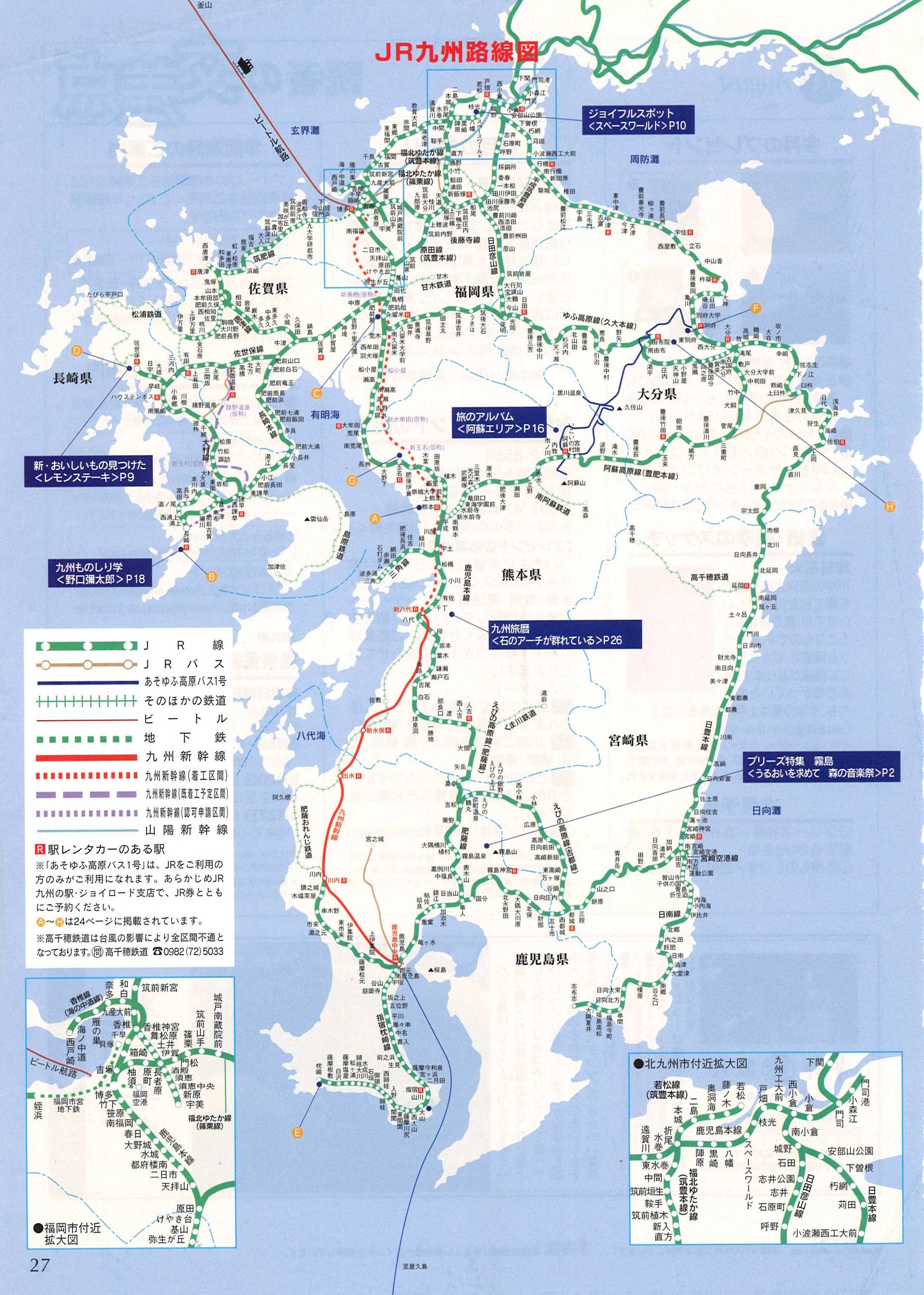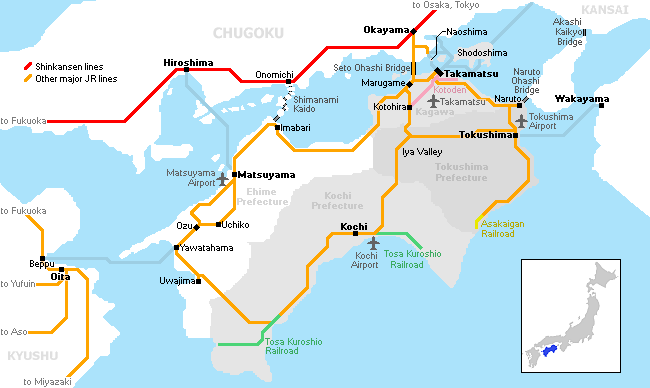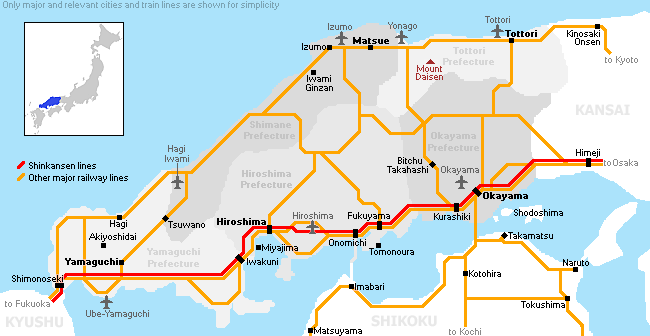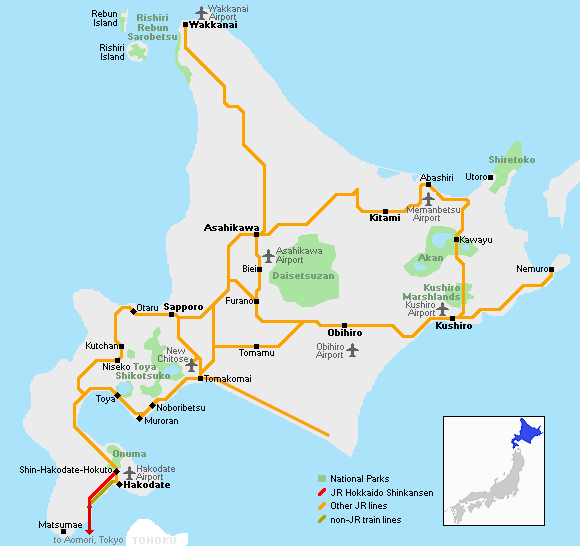Im alten Japan gab es fünf wichtige Handelsstraßen. Zwei von ihnen verbanden Tokyo (die neue Hauptstadt) und Kyoto (die alte Hauptstadt): der Tokaido (東海道) und der Nakasendo (中山道).
Tokaido heißt östlicher Seeweg. Er führte an der Küste entlang. Der Nakasendo führte mitten durch die Berge. Ein alternativer Name für den Nakasendo war Kisokaido (木曾街道), da es durch das Kisotal führt.
Warum ist der Tokaido so bekannt?
Historisch war der Tokaido die wichtigste Handelstraße zwischen den beiden Metropolen. Dies ist jedoch nicht der Grund für seine Poluparität. „Schuld ist auch Hiroshige Ando, ein Künstler der heute noch für seine Farbholzschnitte, ukiyo-e genannt, bekannt ist. Er schuf einen Bilderzyklus, die 53 Stationen des Tokaido.
Die 53 Stationen referenzieren auf die 53 Post Towns, die es am Tokaido gab. Dies waren nicht nur Raststationen mit der Möglichkeit sind mit Lebensmittel zu versorgen oder zu übernachten. Es waren zudem Grenz- und Kontrollstationen, da dem normalen Japaner das Reisen verboten war und man Passierscheine brauchte.
Hiroshige schuf zu jeder Station schuf er Bild, das charakteristisch für diese Station ist. Dies ist entweder ein ikonografisches Gebäude oder Landschaft. Diese insgesamt 55 Bilder (Start- und Endpunkte haben auch ein Bild) sind in sich eine virtuelle Reise entlang des Tokaido. Mehr dazu schreibe ich in einem eigenen Artikel.
Ich und der Tokaido und seine 53 Stationen
Ich Hakone bin ich etwa 1km auf dem alten Tokaido gewandert. Für einen längeren Abschnitt habe ich nicht Zeit gefunden. Vom Nakasendo bin ich die etwa 8km zwischen Tsumago und Magome gewandert. Und leider habe ich die Angewohnheit Sache zu Ende bringen zu wollen.
Außerdem: Ich habe jetzt 9 Reisen hinter mir. Ich bin mit den Highlights und den „könnte man auch mal besuchen“ der Reisenführer durch. Ich war in Manazuru. Der Ort steht nicht einmal im Lonely Planet. Ich glaube, was ich sagen will ist folgendes: Ich brauche neue Themen, neue Dinge zu tun. Bisher gibt es folgende Ideen:
- die 77 Tempel von Shikoku (das Projekt könnte Jahre dauern),
- alle Brücken des Kandagawa, Sumidagawa und Nihonbashigawa fotografieren,
- Animeorte aufsuchen (nächster Stopp: 小林さんちのメイドラゴン; Miss Kobayashi’s Dragon Maid) und
- den alten, originalen Tokaido von Tokyo nach Kyoto abfahren
Und wenn wir schon dabei sind, dann können wir auch gleich 53 neue Bilder vom Tokaido machen. Ich probiere mich nicht in ukiyo-e, sondern werde die Kamera nehmen. Aber, ich werde mich von der Idee von Hiroshige leiten lassen.
Ich und wandern?
Jetzt gibt es einen Haken an dem Plan. Ich bin kein großer Freund von Wandern. So gar nicht. Ja, mal für einen Tag. Die 20 km im Daisetsuzan-Gebirge wren cool. Haben dann aber auch gereicht. Der Tokaido hat über 400km. Das wäre 20 solcher Tage am Stück. — Das schafft man nicht in einem Urlaub, wenn man auch noch ein paar Tage in Tokyo oder einem Onsen verbringen will.
Dann bin ich kein Freund von „Backpacking“. Ich müsste ja alle meine Klamotten immer mitführen; dazu die Kameraausrüstung. Das ist jetzt so gar nicht mein Stil. Es ist dr gleiche Grund warum ich keine Hostels buche. Ich und Backpacker sind nicht kompatibel.
Ein Plan reift
Daher gibt es folgende Planänderung: Ich nehme das Fahrrad. Niemand hat gesagt, dass ich laufen muss. Mit einem E-Bike (denn es geht auch zwei Mal durch die Berge), sollte ich 60 km am Tag schaffen. Das entspricht der Strecke Wakkanai-Soyamisak und zurück, die ich aufgrund eines Planungsfehlers in unter 5 Stunden auf einem 24er-Damenfahrrad mit Körbchen zurückgelegt habe.
Ich hatte auch erst überlegt, ein Motorrad zu mieten. Aber ich vermute, dass viele Streckenabschnitte des Tokaido nicht befahrbar sind. Ich weiß nicht einmal, ob man überall mit dem Fahrrad durchkommt.
Eine andere Idee war es, den Zug zu nehmen. Das ist theoretisch möglich, aber die Tokaido-Bahnstrecke ist teilweise ein paar Kilometer vom echten Tokaido entfernt und auch die Bahnhöfe weren einen Offset haben. Am Ende werde ich wohl genausoweit vom Bahnhof zum geplanten Fotografierpunkt laufen, als wie von einem Punkt zum nächsten.
Tempo
Bei 60 Kilometer am Tag braucht man nur noch 7 Tage für die gesamte Strecke. Man passiert etwa 7 Post Towns am Tag. Bei einer Reisegeschwindigkeit von 15 km/h ist man 4 Stunden am Radeln. und hat 6 Stunden für Sightseeing. Naaa, das wird evtl. stressig. — 50 km am Tag, macht 10 Reisetage und 6 Post Towns am Tag. Bleiben wir bei 4 Stunden radeln, haben wir 1 Stunde für jede Post Town.
Die Idee mit der Wäsche ist jetzt wie folgt: Ich nehme Wäsche für zwei Tage (Übernachtungen) ins Handgepack. Und schicke meinen Koffer mit einem Lieferservice immer zum dritten Hotel. Hier könnte ich dann auch für 2 oder 3 Tage bleiben. Das wären dann meine Basisstationen, an denen ich auch Regentage puffern kann. Ich kann einen Waschtag einlegen, die Bilder von der SD-Karte aufs Notebook übertragen, …
Wie ich die Hotels dazwischen buche, weiß ich noch nicht. Eventuell mache ich das wie in Schottland und suche mir etwas am Ort, an dem ich gerade bin. Am Ende bin bestimmt wieder bei 20 Tagen, aber sehr entspannt.
googlemaps und die nächsten 5 Beträge
Als erstes muss ich den alten Tokaido finden. Denn ähnlich wie in Deutschland wurde aus der alten Handelsstraße eine Bundesstraße. Diese wurden teilweise autobahnähnlich ausgebaut. Es wurden Ortsumgehungen gebaut.
Zuallererst muss ich versuchen den alten Verlauf des Tokaido zu finden. Und das führte dazu, dass ich versucht habe, den Verlauf auf googlemaps zu konstruieren. Was mich am Ende Wochen gekostet hat. Aber ich glaube ich habe es. Und davon berichten die nächsten 5 Blogeinträge.
Ich bin noch nicht fertig
Die Arbeit ist noch nicht ganz fertig. Es fehlen noch ein paar Notizen und Karten. Es fehlen hier und da auch noch ein paar Abschnitte, da die Informationen nicht eindeutig sind. Ich bin detzeit auf der Suche nach Büchern über den Tokaido, die mir helfen, die Lücken zu füllen. Außerdem will ich den Tokaido nicht bereisen und dann ein Detail zu übersehen. Stell dir vor die fährst nach Lübeck und vergisst das Holstentor, da es nicht auf der direkten Linie der 5 großen Kirchen steht.

